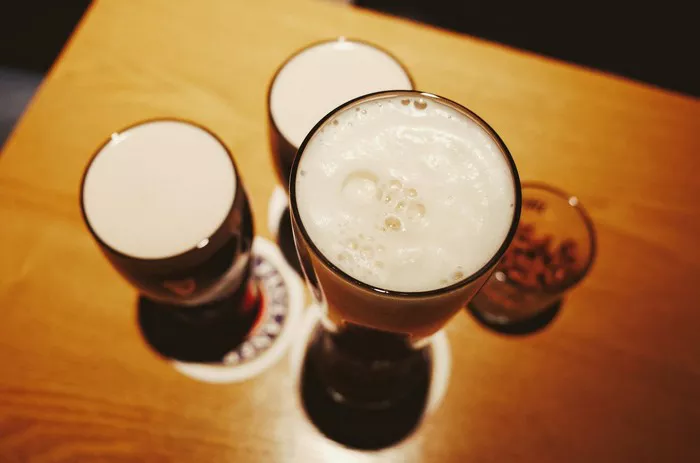Beer, the age-old beverage that has quenched thirsts and brought joy for centuries, holds a special place in the hearts of many. While store-bought options abound, the allure of creating your own beer is a journey that beckons with creativity, patience, and a dash of science. Aspiring homebrewers often wonder about the time investment required to transform simple ingredients into a frothy, flavorful brew. In this article, we delve into the intricate timeline of brewing your own beer, from the moment the ingredients meet to the day you raise a glass to your handcrafted creation.
The Brewmaster’s Canvas: Understanding the Brewing Process
Before diving into the timeline, let’s paint a broad stroke of the brewing process, which consists of several key stages:
Mashing: Malted grains are mixed with water to extract fermentable sugars, creating a sweet liquid called wort.
Boiling: The wort is boiled, and hops are added at different intervals for bitterness, flavor, and aroma.
Cooling: The boiled wort is rapidly cooled to a temperature suitable for fermentation.
Fermentation: Yeast is added to the cooled wort, and fermentation begins. Yeast consumes sugars, producing alcohol and carbon dioxide.
Maturation: The beer is allowed to mature, allowing flavors to develop and harsh compounds to mellow.
Bottling or Kegging: Once fermentation and maturation are complete, the beer is either bottled or transferred to kegs.
Carbonation: If bottling, sugar is added to the beer to carbonate it naturally in the bottle.
Aging: Some styles benefit from additional aging, allowing flavors to meld and mature.
The Timeframe Unveiled: Stages of Brewing Your Own Beer
1. Preparation and Planning (1-2 days)
Before embarking on your brewing journey, a bit of preparation and planning is in order. This involves selecting a recipe, gathering ingredients, ensuring you have the necessary equipment, and sanitizing your brewing equipment to create a clean environment for fermentation.
2. Brewing Day (4-6 hours)
On brewing day, you dive into the heart of the process. The actual brewing typically takes around 4 to 6 hours, depending on the complexity of your recipe and your familiarity with the process. Here’s a breakdown of the stages:
Mashing: This stage involves mixing crushed malted grains with water to create the sweet wort. The mashing process typically takes around 1 to 1.5 hours.
Boiling: After mashing, the wort is boiled, and hops are added at various intervals for bitterness, flavor, and aroma. Boiling usually lasts around 1 to 1.5 hours.
Cooling: Once the boiling is complete, the wort needs to be rapidly cooled to a temperature suitable for fermentation. This step can take 20-30 minutes, depending on the cooling method used.
Transferring and Aeration: The cooled wort is transferred to the fermentation vessel, and yeast is pitched. This process includes aeration to provide oxygen for the yeast to start fermentation.
3. Fermentation (1-3 weeks)
Fermentation is where the magic happens. Yeast converts the sugars in the wort into alcohol and carbon dioxide. The duration of fermentation can vary based on factors such as yeast type, temperature, and beer style. Generally, primary fermentation lasts around 1 to 2 weeks, with some high-alcohol or complex styles requiring up to 3 weeks.
4. Maturation (1-4 weeks)
After primary fermentation, the beer is often transferred to a secondary vessel for maturation. During this time, flavors develop, and harsh compounds can mellow. Depending on the beer style, maturation can take anywhere from 1 to 4 weeks.
5. Bottling or Kegging Day (2-4 hours)
As maturation comes to an end, it’s time to prepare your beer for consumption. This involves bottling the beer or transferring it to kegs for carbonation and storage. The process includes adding priming sugar to the beer if bottling, which creates carbonation as the residual yeast consumes the added sugar. This step takes around 2 to 4 hours, depending on the quantity of beer and your bottling or kegging setup.
6. Carbonation and Aging (1-3 weeks)
After bottling or kegging, the beer enters a final phase of carbonation. If you’ve bottled the beer, it typically takes 1 to 3 weeks for natural carbonation to occur. During this time, the beer should be stored in a cool, dark place. Some beer styles benefit from additional aging, allowing flavors to meld and mature. It’s important to note that while the beer becomes carbonated relatively quickly, flavors can continue to evolve and improve over time.
Conclusion
As you can see, brewing your own beer is a labor of love that unfolds over several weeks. From the exhilarating brewing day to the anticipation of tasting the final product, each stage requires attention, care, and a touch of patience. While the entire process can take anywhere from 4 to 8 weeks, it’s important to remember that the reward is more than just a beverage – it’s the satisfaction of creating something uniquely yours.
Homebrewing isn’t just about the destination; it’s about the journey of exploration, experimentation, and creativity. The time invested in crafting your own beer is a testament to the craftsmanship that has been passed down through generations. So, whether you’re a novice or an experienced brewer, the process of making your own beer is a symphony of flavors, aromas, and memories that culminate in a glass of liquid gold crafted by your hands and heart.


